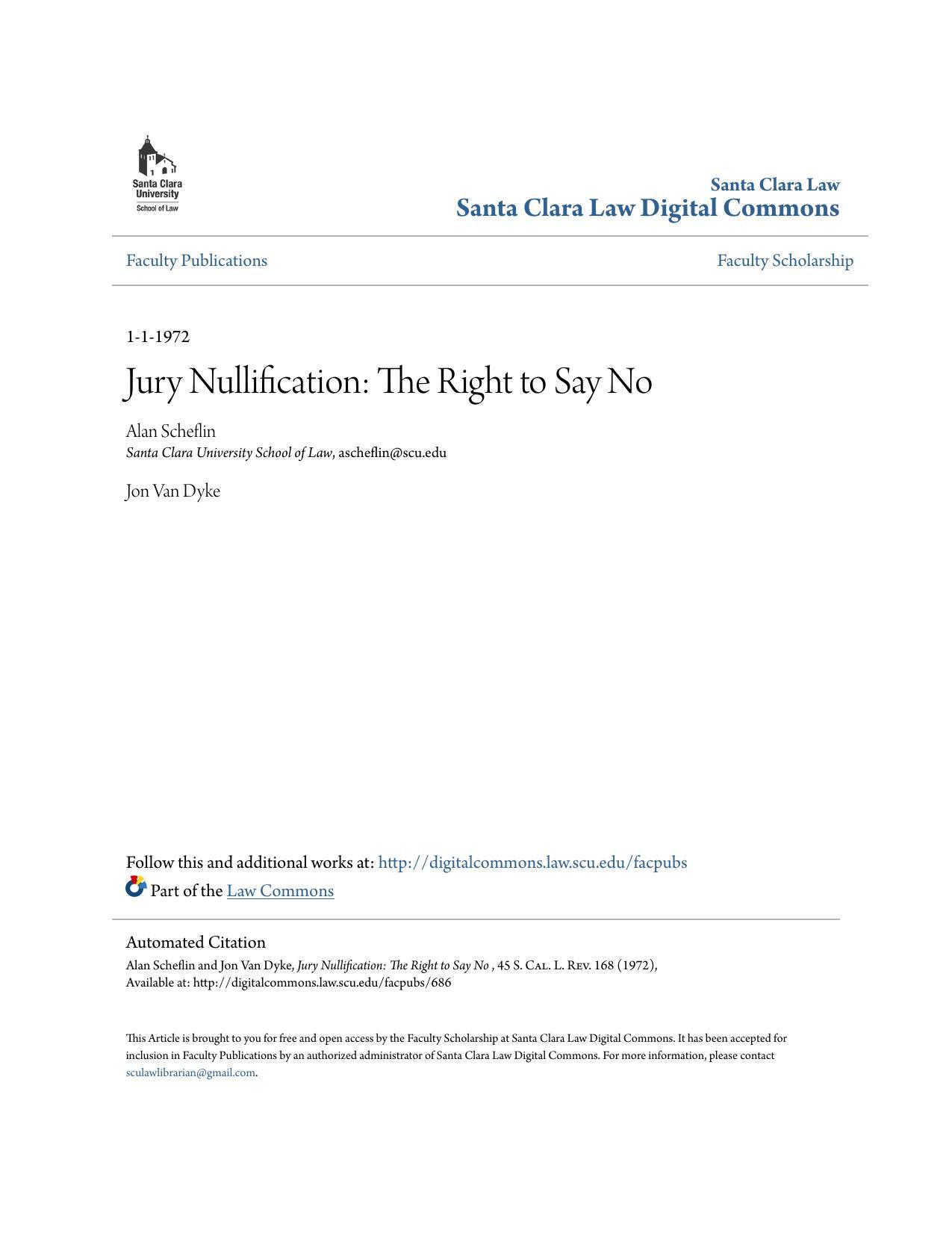Alan Scheflin
Jury Nullification: The Right to Say No (1972)

Only one of the countless historical trials held at the Old Bailey in London is commemorated by a memorial in the present building. On a plaque near Court No. 5 are inscribed these words:
Near this site William Penn and William Mead were tried in 1670 for preaching to an unlawful assembly in Gracechurch Street.
This tablet commemorates the courage and endurance of the Jury, Thomas Vere, Edward Bushell and ten others, who refused to give a verdict against them although they were locked up with- out food for two nights and were fined for their final verdict of Not Guilty.
The case of these jurymen was reviewed on a writ of Habeas Corpus and Chief Justice Vaughan delivered the opinion of the court which established the Right of Juries to give their Verdict according to their conviction.'
All of the jurors in that celebrated case were fined and jailed until they ,paid their fines in full. Four of them spent months in prison and all were locked up without "meat, drink, fire and tobacco" for three days in an attempt to force them to change their verdict. Their courage, fortitude and dedication to the spirit of liberty has been institutionalized in our legal system under the doctrine of jury nullification.
According to this doctrine, the jurors have the inherent right to set aside the instructions of the judge and to reach a verdict of acquittal based upon their own consciences, and the defendant has the right to have the jury so instructed.
Downloads and Links
- Download Jury Nullification: The Right to Say No (1972) by Alan Scheflin & Jon Van Dyke - PDF (1508 kB) - 61 pages.
- https://digitalcommons.law.scu.edu/cgi/viewcontent.cgi?referer=&httpsredir=1&article=1686&context=facpubs
- Web search for the book by author and title
